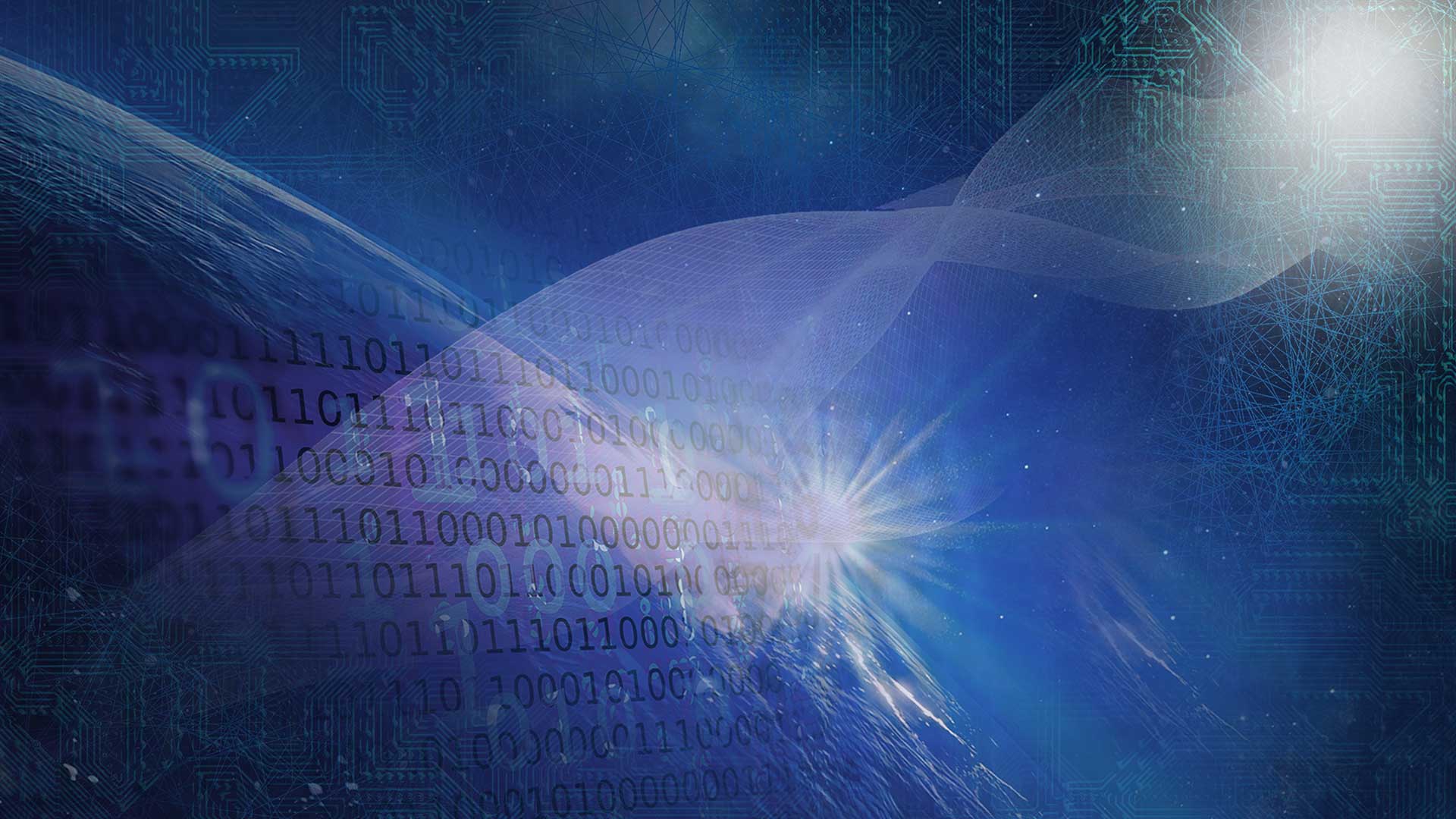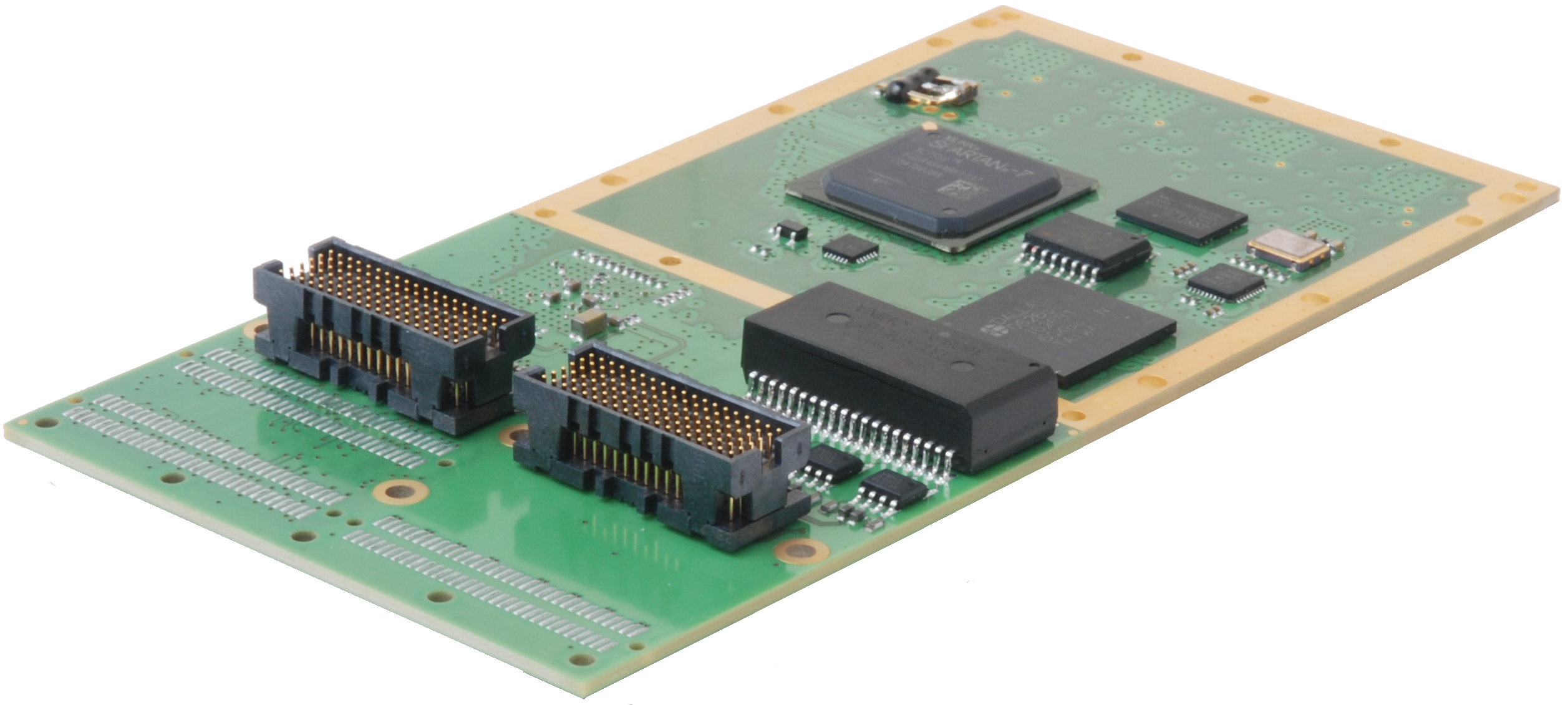

NAT-XMC-4E1
Line Interface Switched Mezzanine Card (XMC)
Description
The NAT-XMC-4E1 is a conduction-cooled XMC with Line Interface (LIF) functionality and Xilinx Spartan-7 FPGA. That means, it processes data between E1 / T1 digital data transmission formats on one side, and PCI or PCIe interfaces on the other. A typical application may be converting between PSTN and VoIP networks, with appropriate software.
For operation in a standard PCIe slot, the XMC must be mounted on a suitable carrier board. This combination is called NAT-PCIe-XMC-4E1. The carrier joins into a PCIe slot as common, e.g. in a PC; on the other side it passes LIF functionality from the NAT-XMC-4E1 towards the user via RJ45 connector.
NAT-XMC-4E1 Resources
NAT-XMC-4E1 processing power comes from a Xilinx Spartan-7 FPGA, featuring a MicroBlaze soft processor running over 200 DMIPs, an integrated ADC, and dedicated security features.
The FPGA owns a PCI interface that connects the PCI bus to an XMC-internal local-bus-system, which on turn delivers the information to the LIF unit. On this local-bus, these sections are memory-mapped:
- General control / status registers
- Clock/synchronization control / status block
- Access to E1-framer
- DMA engine control / status
The NAT-XMC-4E1 therefore uses only one PCI window (size less than 1MB) mapped into the host PCI memory.
The 8-port Maxim/Dallas DS26518 E1 / T1 Single-Chip Transceiver (SCT) is a framer and line interface unit. It supports both long-haul and short-haul lines as the ports are configurable independently.
The Broadcom/PLX ExpressLane PEX 8112 PCIe-to-PCI bridge is a high-performance bridge according to the PCI Express-to-PCI Bridge Specification 1.0. So it enables designers to migrate legacy PCI bus interfaces to the new advanced serial PCI Express. Additionally, this 2-port device features a single lane PCI Express port and a parallel bus segment supporting the conventional PCI operation.
Moreover, the NAT-XMC-4E1 provides 64 MB SPI flash and 512 MB 8-bit-wide DDR3 DRAM (optional). Both connect directly to the FPGA for future use.
NAT-PCIe-XMC-4E1 Applications
The NAT-PCIe-XMC-4E1 Linux driver is developed by NAT and works together with Digium Asterisk Hardware Device Interface (DAHDI)*. Thus, the NAT-PCIe-XMC-4E1 can interface with Asterisk and all its telephony capabilities.
The software manual provides full details on how to install and use the driver, including instruction of how to set up a DAHDI installation. So it is easy to integrate the NAT-PCIe-XMC-4E1 card into a software-defined private branch exchange (PBX) or similar use cases.
*Asterisk is a free and open-source framework for building communications applications
Key Features
- XMC form factor
Processing Resources
- Xilinx Spartan-7 FPGA
- Maxim/Dallas DS26518 E1/T1 framer
- Broadcom/PLX ExpressLane PEX 8112 PCIe-to-PCI bridge
- 64 MB SPI flash and 512 MB 8-bit-wide DDR3 DRAM (optional)
Front Panel Interfaces
- none
Backplane Connectivity
- depends on carrier board
Software
- Xilinx Vivado Lab Edition
Related Products
Order Codes
NXMC-4E1– [Option]
| – | Conduction cooled (op temp -40C to +85C) XMC module for communication applications with a need for a high aggregation of multiple E1/T1 interfaces, providing 4 E1 Interfaces at XMC connector |
Solutions / Applications
- ISDN – VoIP Gateway Solutions
